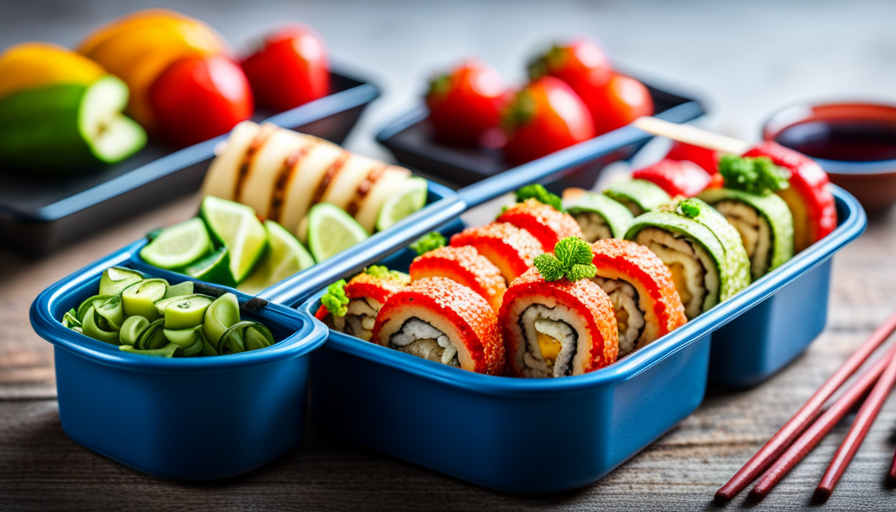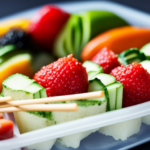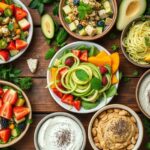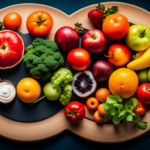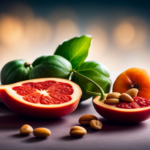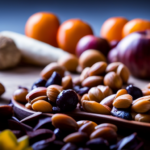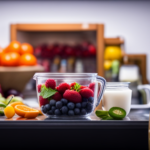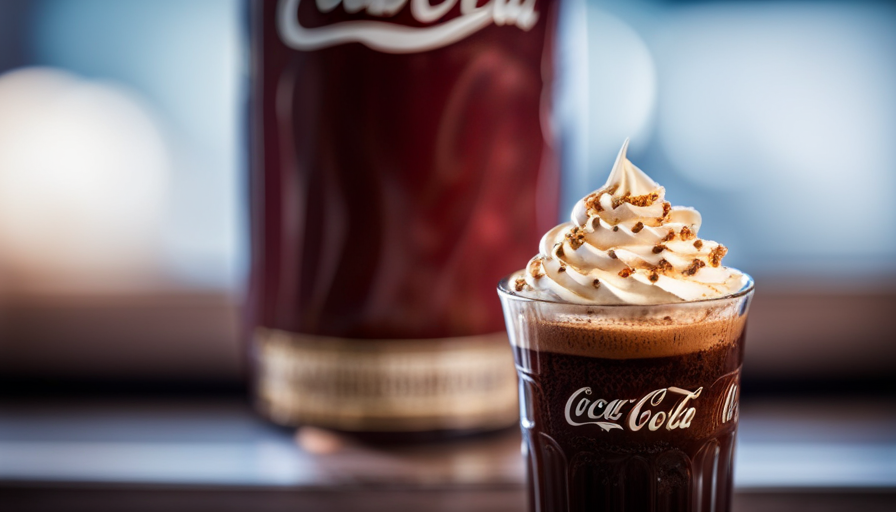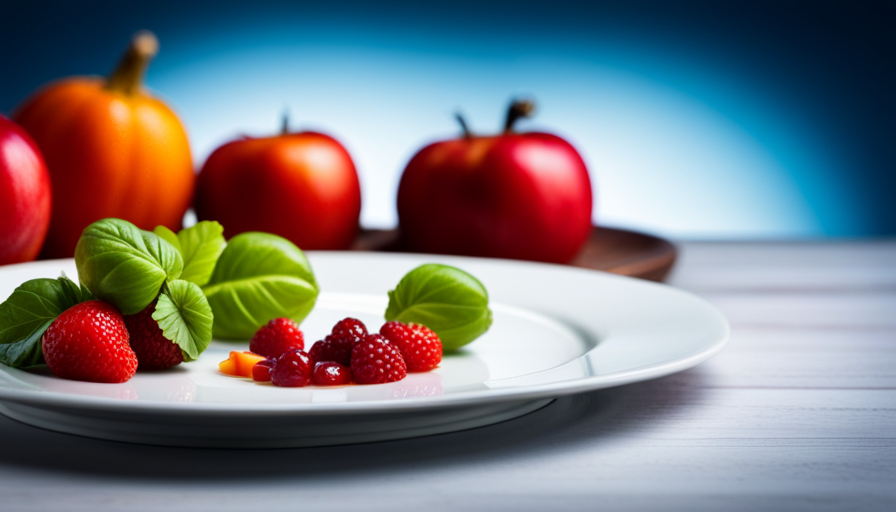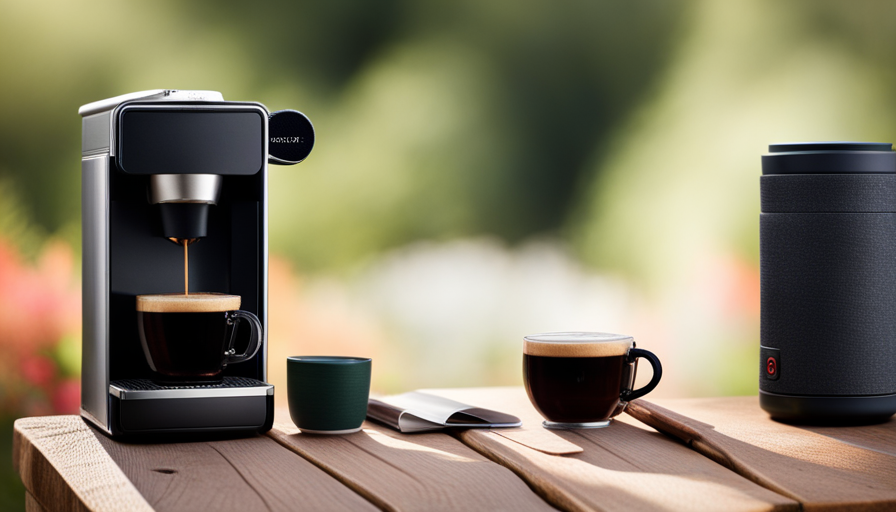Imagine this scenario: as you stroll through your school’s hallways, the aroma of freshly baked cookies fills the air, tempting your senses. However, as a devoted raw vegan dedicated to a lifestyle centered around the pure goodness of unprocessed, plant-based foods, how do you approach the limited options for raw vegan meals in the school cafeteria?
In this article, I will guide you through the world of raw veganism and show you how to take your own delicious and nutritious meals to school. From meal planning and preparation tips to easy raw vegan recipes, I will provide you with the tools you need to stay satisfied and energized throughout the school day.
We will also explore strategies for storing and transporting your raw vegan meals, as well as hydration and beverage options to keep you refreshed. Additionally, I will share ways to incorporate raw veganism into your school routine and the joy of exploring local farmers markets and organic stores.
Get ready to embark on a journey of vibrant flavors and nourishing meals – all while thriving as a raw vegan in the school environment.
Key Takeaways
- Gradually incorporate raw foods into your diet to transition to a raw vegan lifestyle.
- Meal planning and preparation can save time and ensure nutritious options are always available.
- Investing in high-quality food containers and insulated bags is essential for storing and transporting raw vegan meals.
- Bring visually appealing raw vegan meals to school to spark conversations and inspire others to try healthier options.
Benefits of a Raw Vegan Diet
Discover the mind-blowing array of health advantages you can reap by embracing a raw vegan diet. The benefits of a raw vegan diet are remarkable and extend far beyond just weight loss. By consuming a diet primarily composed of whole, unprocessed plant foods, you can experience improved digestion, increased energy levels, and enhanced mental clarity.
A raw vegan diet is rich in antioxidants, vitamins, and minerals, which can boost your immune system and reduce the risk of chronic diseases. Additionally, this diet can lead to glowing skin, stronger hair, and nails.
Transitioning to a raw vegan diet can be a challenge, but with a few tips, it can be a successful and enjoyable journey. Start by gradually incorporating more raw foods into your meals and reducing your intake of processed and cooked foods. Experiment with different recipes and find creative ways to prepare fruits, vegetables, nuts, and seeds. It’s also important to ensure you’re consuming a variety of plant-based proteins and fats to meet your nutritional needs.
Now that you understand the benefits of a raw vegan diet and have some tips for a successful transition, let’s dive into meal planning and preparation tips.
Meal Planning and Preparation Tips
When it comes to meal planning and preparation, two key points to consider are batch cooking and meal prepping, as well as choosing portable and convenient foods.
Batch cooking and meal prepping can save time and energy throughout the week by preparing large quantities of meals in advance.
Choosing portable and convenient foods ensures that you have nutritious options readily available, especially when you’re on the go or taking meals to school or work.
Batch Cooking and Meal Prepping
Although it may require some extra effort, batch cooking and meal prepping are essential for any raw vegan student looking to bring food to school. By taking the time to plan and prepare meals in advance, you can save time and ensure that you always have nutritious options available.
Here are some batch cooking hacks and time-saving meal prep ideas to get you started:
-
Cook large quantities of staple foods like quinoa, lentils, and beans and store them in the fridge or freezer for quick and easy meal assembly.
-
Chop and wash your fruits and vegetables ahead of time, so they’re ready to grab and go.
-
Make big batches of raw vegan sauces, dressings, and dips to enhance the flavor of your meals throughout the week.
-
Use mason jars or reusable containers to pack your prepped meals and snacks for school.
By incorporating these batch cooking and meal prepping tips into your routine, you’ll have a wide variety of nutritious options to choose from when it’s time to pack your lunch for school.
Transitioning into the next section about choosing portable and convenient foods, you can ensure that your meals are not only nutritious but also easy to carry and enjoy on the go.
Choosing Portable and Convenient Foods
One convenient way to ensure your meals are easily transportable is by selecting grab-and-go options that can be enjoyed anywhere. When it comes to raw vegan food, there are several benefits that make it an excellent choice for on-the-go meals.
Raw vegan meals are packed with nutrients since they’re not cooked at high temperatures, preserving the natural enzymes and vitamins. Additionally, raw vegan foods are often lighter and more refreshing, making them perfect for school lunches.
Some easy raw vegan recipes to consider include veggie wraps with collard greens or nori sheets, fruit and nut bars, and vegetable sticks with homemade hummus. These options are not only portable but also delicious and satisfying.
Transitioning into the subsequent section about easy raw vegan recipes for school lunches, there are numerous creative and flavorful options to explore.
Easy Raw Vegan Recipes for School Lunches
When it comes to packing school lunches, I always opt for easy and nutritious options. One of my go-to recipes is raw veggie wraps and rolls, which are packed with fresh vegetables and bursting with flavor.
Another favorite is nut and seed energy balls, which aren’t only delicious but also provide a great source of energy throughout the day.
Lastly, I always include fresh fruit and vegetable salads in my lunchbox, as they’re a refreshing and healthy option.
These easy raw vegan recipes are perfect for school lunches and will keep you feeling satisfied and energized throughout the day.
Raw Veggie Wraps and Rolls
To enjoy a satisfying and nutritious lunch at school, you can easily prepare delicious raw veggie wraps and rolls that’ll leave your taste buds dancing with joy. Here are four creative lunch ideas to try:
-
Rainbow Veggie Collard Wraps: Fill large collard green leaves with a colorful assortment of shredded carrots, bell peppers, cucumber, and sprouts. Roll ’em up tightly and secure with toothpicks.
-
Nori Rolls: Spread a sheet of nori seaweed with avocado or nut butter, then layer on thinly sliced veggies like cucumber, bell peppers, and julienned carrots. Roll it up tightly and slice into bite-sized pieces.
-
Lettuce Cups: Use large lettuce leaves as cups and fill ’em with a mixture of diced veggies, such as tomatoes, bell peppers, and mushrooms. Drizzle with a tangy dressing for added flavor.
-
Zucchini Rolls: Slice zucchini into thin strips and fill ’em with a combination of mashed avocado, shredded carrots, and sprouts. Roll ’em up and secure with toothpicks.
These raw veggie wraps and rolls aren’t just tasty but also packed with nutrients to keep you energized throughout the day.
Now, let’s move on to nut and seed energy balls.
Nut and Seed Energy Balls
Get ready to power up your day with these delicious and nutritious nut and seed energy balls that will keep you going strong! Nut and seed energy balls are a great option for a quick and easy raw vegan snack that you can take to school. They are packed with protein, healthy fats, and fiber, making them a satisfying and energizing choice. Plus, incorporating nuts and seeds into your raw vegan diet has numerous benefits. Nuts and seeds are rich in essential nutrients like vitamins, minerals, and antioxidants. They also provide a good source of plant-based protein, which is important for maintaining muscle strength and promoting overall health. To give you some inspiration, here are a few nut and seed energy ball recipes you can try:
| Recipe | Ingredients |
|---|---|
| Almond joy energy balls | Almonds, dates, shredded coconut, cocoa powder |
| Peanut butter energy balls | Peanuts, dates, chia seeds, vanilla extract |
| Cashew cookie dough energy balls | Cashews, oats, dates, vanilla extract |
Incorporating these delicious nut and seed energy balls into your raw vegan diet will give you a boost of energy and provide your body with essential nutrients. Next up, we’ll explore the refreshing world of fresh fruit and vegetable salads.
Fresh Fruit and Vegetable Salads
Indulge in the vibrant and refreshing world of fresh fruit and vegetable salads that’ll leave your taste buds craving for more! These nutrient-packed salads aren’t just delicious but also provide a plethora of health benefits.
Incorporating a variety of colorful fruits and vegetables into your diet can boost your immune system, improve digestion, and increase energy levels.
To add some variety to your raw vegan school meals, you can also enjoy fruit and vegetable smoothies, which’re a great way to stay hydrated and satisfy your sweet tooth.
Additionally, dehydrated fruit and veggie chips make for a convenient and tasty snack option that you can easily pack in your lunchbox.
With these delicious options, you can have a nutritious and satisfying raw vegan meal at school.
Now, let’s move on to some tips for storing and transporting your raw vegan meals.
Tips for Storing and Transporting Raw Vegan Meals
When it comes to storing and transporting raw vegan meals, investing in high-quality food containers is essential. Not only do they help keep your food fresh and prevent leakage, but they also ensure that your meals stay intact during transportation.
Additionally, using ice packs and insulated bags can help maintain the temperature of your raw vegan meals, keeping them cool and safe to eat throughout the day.
Investing in High-Quality Food Containers
Make your school lunches a feast fit for a king by investing in high-quality food containers that’ll keep your raw vegan meals fresh and delicious all day long!
High-quality food storage containers offer numerous benefits for raw vegans. Not only do they help maintain the freshness and flavor of your meals, but they also prevent any potential cross-contamination with other foods. These containers are typically made from durable materials like glass or stainless steel, which are non-toxic and BPA-free. They’re also leak-proof, ensuring that your meals won’t spill or mix together during transportation.
By investing in high-quality food containers, you can have peace of mind knowing that your raw vegan meals will stay fresh and safe to consume throughout the day.
Now, let’s move on to the next section about using ice packs and insulated bags to further optimize your lunchtime experience.
Using Ice Packs and Insulated Bags
When it comes to investing in high-quality food containers for packing my raw vegan meals, I’ve found that using ice packs and insulated bags is essential. Not only do these tools help keep my food fresh and safe, but they also allow me to pack a variety of foods without worrying about spoilage or temperature fluctuations.
To grab your attention, here are four tips for packing your raw vegan meals using ice pack alternatives and insulated bags:
- Freeze water bottles to use as ice packs.nn2. Use frozen fruits or vegetables as natural cooling agents.nn3. Invest in reusable ice packs made from non-toxic materials.nn4. Pack your meals in an insulated bag to maintain the temperature.
By following these tips, you can ensure that your raw vegan meals stay fresh and delicious throughout the school day.
Now, let’s move on to the next section and learn how to stay satisfied and energized throughout the day without compromising our raw vegan lifestyle.
How to Stay Satisfied and Energized Throughout the School Day
When it comes to staying satisfied and energized throughout the school day, incorporating healthy fats and protein into my meals has been a game changer. Not only do these nutrients provide long-lasting energy, but they also help to keep me full and focused.
I love snacking on nuts, seeds, and dried fruits as they’re not only delicious, but they also provide a good source of healthy fats, protein, and fiber to keep me going until my next meal.
Incorporating Healthy Fats and Protein
To incorporate healthy fats and protein into your raw vegan school lunches, you’ll want to try adding a dollop of creamy avocado spread to your collard green wraps. Avocado is not only delicious, but it also provides a good amount of healthy fats and essential nutrients. Another great way to add healthy fats and protein is by including nuts and seeds in your meals. These little powerhouses are packed with nutrients and can easily be sprinkled onto salads or mixed into homemade energy bars. To give you some ideas, here’s a table showcasing a few plant-based sources of healthy fats and protein:
| Healthy Fats | Protein Sources |
|---|---|
| Avocado | Hemp seeds |
| Nuts (almonds, walnuts, cashews) | Chia seeds |
| Seeds (flax, pumpkin, sunflower) | Quinoa |
By incorporating these plant-based sources of healthy fats and protein into your raw vegan lunches, you’ll feel satisfied and energized throughout the school day. Now, let’s move on to the next section about snacking on nuts, seeds, and dried fruits.
Snacking on Nuts, Seeds, and Dried Fruits
For a satisfying and nutritious snack, try indulging in the crunchy goodness of nuts, the flavorful burst of seeds, and the natural sweetness of dried fruits. These healthy snacking options aren’t just delicious but also provide essential nutrients for your body.
Nuts are packed with healthy fats, protein, and fiber, making them a great source of energy. Seeds, like chia and flaxseeds, are rich in omega-3 fatty acids and antioxidants, which promote heart health and reduce inflammation. Dried fruits like raisins and apricots offer a concentrated source of vitamins, minerals, and fiber.
These on-the-go options are perfect for taking to school as they require no preparation and can be easily stored in a small container. By incorporating these snacks into your daily routine, you can ensure you’ve got a nutritious boost whenever hunger strikes.
Transitioning to the next section, overcoming challenges and dealing with social situations can be an important aspect of maintaining a raw vegan diet.
Overcoming Challenges and Dealing with Social Situations
Navigating social situations as a raw vegan can sometimes feel isolating, but finding ways to overcome challenges and still enjoy meals at school can bring a sense of empowerment and connection.
One of the biggest challenges as a raw vegan is overcoming peer pressure. When your classmates are eating processed snacks and fast food, it can be tempting to give in and abandon your raw vegan lifestyle. However, staying true to your values and beliefs is important. One way to handle lunchtime temptations is by preparing delicious and visually appealing raw vegan meals that’ll make your classmates curious and interested in what you’re eating. Bringing colorful salads, wraps, or fruit platters can spark conversations and even inspire others to try healthier options.
Additionally, educating your friends and classmates about the benefits of a raw vegan lifestyle can help them understand and respect your choices.
Transitioning into the subsequent section about hydration and beverage options for school, it’s important to also consider what you drink. Staying hydrated is crucial for overall health, especially during long school days. As a raw vegan, there are plenty of options to choose from. Freshly squeezed juices, infused water with fruits or herbs, or even coconut water can provide hydration and essential nutrients.
By being prepared and knowledgeable about your food and beverage choices, you can confidently navigate social situations and enjoy your raw vegan meals at school.
Hydration and Beverage Options for School
Overcoming challenges and dealing with social situations can be tough when following a raw vegan diet, but one aspect that shouldn’t be overlooked is staying hydrated throughout the school day. Hydration is essential for overall health and well-being, and it becomes even more important when consuming a raw vegan diet.
To ensure adequate hydration, there are a few tips to keep in mind. First, always carry a refillable water bottle with you to school. This’ll make it easy to access water throughout the day and stay hydrated.
Additionally, incorporating hydrating foods into your meals and snacks can help increase your water intake. Fruits and vegetables, such as watermelon, cucumber, and lettuce, have high water content and can contribute to your hydration needs.
While water is the best beverage for hydration, there are also alternative options for those who want a little variety. Herbal teas, infused water with fruits or herbs, and coconut water are all great choices. Just be mindful of added sugars in some store-bought beverages.
Incorporating raw veganism into your school routine can be challenging, but with proper hydration and beverage options, it becomes a little easier. Now let’s explore how to pack nutritious raw vegan meals for school.
Incorporating Raw Veganism into Your School Routine
Make your school routine a vibrant and nourishing adventure by embracing the raw vegan lifestyle and infusing your meals with the vibrant colors and flavors of nature. Incorporating raw veganism into your school routine may seem challenging at first, but with some meal prep and quick recipes, it can become a seamless part of your daily life.
Meal prep is key when it comes to maintaining a raw vegan diet at school. Spend some time on the weekends or the night before to prepare your meals for the week. Chop up fresh fruits and vegetables, make raw vegan dips and dressings, and portion them into containers for easy grab-and-go options. This will save you time during busy mornings and ensure that you have nutritious meals ready to eat.
When it comes to quick recipes, there are plenty of options that require minimal preparation. Smoothies are a great choice for a fast and nutritious meal. Simply blend together your favorite fruits, leafy greens, and some plant-based milk for a delicious and filling smoothie. You can also make raw vegan wraps using lettuce leaves or collard greens as a base, and fill them with a variety of colorful veggies and raw vegan spreads.
Incorporating raw veganism into your school routine doesn’t have to be difficult. With a little bit of meal prep and some quick recipes, you can enjoy nourishing and delicious meals throughout the day. Now, let’s explore how to find the freshest produce by visiting local farmers markets and organic stores.
Exploring Local Farmers Markets and Organic Stores
Exploring local farmers markets and organic stores allows you to immerse yourself in a colorful world of fresh, vibrant produce and discover a wide variety of nourishing options for your daily meals. Here are four reasons why exploring local farmers markets and organic stores is beneficial for raw vegans:
-
Finding unique produce: Local farmers markets often offer a diverse range of fruits, vegetables, and herbs that you may not find in conventional grocery stores. This gives you the opportunity to experiment with new flavors and textures, making your raw vegan meals more exciting and enjoyable.
-
Supporting local farmers: By purchasing from local farmers markets, you’re directly supporting local agriculture and sustainable farming practices. This helps promote a healthier environment and ensures that you have access to high-quality, fresh produce.
-
Building a community: Farmers markets provide a sense of community where you can connect with local farmers, fellow raw vegans, and like-minded individuals. Sharing recipes, tips, and experiences can enhance your raw vegan journey and create lasting friendships.
-
Ensuring freshness and quality: When you shop at farmers markets and organic stores, you can trust that the produce is fresh and of high quality. Knowing where your food comes from and how it’s grown gives you peace of mind.
Exploring local farmers markets and organic stores is just the beginning of celebrating the joy of raw vegan eating in school. By incorporating these fresh and nourishing ingredients into your meals, you can bring excitement and vitality to your daily routine.
Celebrating the Joy of Raw Vegan Eating in School
Immersing yourself in the vibrant world of fresh, colorful produce at local farmers markets and organic stores can bring a sense of joy and vitality to your daily routine, especially when incorporating these nourishing ingredients into your meals at school. As a raw vegan, finding creative ways to celebrate the joy of eating can be both exciting and challenging. However, with a little planning and preparation, you can bring delicious and nutritious raw vegan meals to school.
One way to add a touch of sweetness to your raw vegan school lunches is by including raw vegan desserts. These desserts are made using whole, unprocessed ingredients such as fruits, nuts, and seeds. You can whip up a batch of raw vegan brownies using dates, almonds, and cacao powder or create a refreshing fruit salad with a drizzle of raw vegan chocolate sauce. These desserts not only satisfy your sweet tooth but also provide you with essential nutrients.
In addition to desserts, there are plenty of creative raw vegan lunch ideas that you can try. Instead of traditional sandwiches, you can make lettuce wraps filled with sprouts, avocado, and colorful veggies. Another option is to create raw vegan sushi rolls using nori sheets, julienned vegetables, and a delicious cashew-based sauce. These lunch ideas not only taste great but also provide you with a variety of textures and flavors.
Incorporating raw vegan desserts and creative lunch ideas into your school meals can bring a sense of joy and excitement to your daily routine. With a little planning and preparation, you can enjoy delicious and nutritious meals that nourish your body and mind. So go ahead and explore the world of raw vegan eating in school, and embrace the vibrant flavors and vibrant health it brings.
Frequently Asked Questions
Can I still get enough protein on a raw vegan diet?
Yes, it’s possible to get enough protein on a raw vegan diet. There are plenty of raw vegan protein sources such as nuts, seeds, legumes, and leafy greens. These foods aren’t only rich in protein but also provide essential vitamins, minerals, and antioxidants.
Additionally, a raw vegan diet has numerous benefits including improved digestion, increased energy levels, and a reduced risk of chronic diseases. So, you can confidently meet your protein needs while enjoying the advantages of a raw vegan lifestyle.
Are there any potential drawbacks or side effects of a raw vegan diet?
There are potential health risks and concerns associated with a raw vegan diet. One major concern is the difficulty in obtaining enough essential nutrients, such as protein, iron, and vitamin B12.
Long-term sustainability can also be challenging due to the limited variety of foods and potential nutrient deficiencies. It is important to carefully plan and monitor your diet to ensure you’re meeting all your nutritional needs. Consulting with a healthcare professional or registered dietitian is recommended.
How can I deal with cravings for cooked or processed foods while at school?
To deal with cravings for cooked or processed foods while at school, I rely on cooking alternatives and finding raw vegan recipes.
There are countless delicious and nutritious raw vegan options that can satisfy my cravings, such as zucchini noodles, cauliflower rice, or homemade vegetable chips.
By experimenting with different recipes and cooking techniques, I can create flavorful and satisfying meals without compromising my raw vegan lifestyle.
Can I still participate in school events or activities that involve non-vegan food?
Yes, you can still participate in school events or activities that involve non-vegan food. While it may be challenging to find suitable options, you can bring your own plant-based alternatives. Pack a nutritious and delicious meal or snack that aligns with your dietary preferences.
Additionally, you can communicate with the event organizers or cafeteria staff to see if they can accommodate your needs by providing vegan options. Remember, it’s important to stay true to your values while still enjoying the social aspects of school events.
Are there any specific supplements or nutrients I should be mindful of on a raw vegan diet?
I’d be happy to share some supplement recommendations and nutrient deficiencies to be mindful of on a raw vegan diet.
It’s important to ensure you’re getting enough vitamin B12, iron, calcium, and omega-3 fatty acids. These nutrients can be more challenging to obtain from a raw vegan diet alone.
Consider taking a vitamin B12 supplement and incorporating plant-based sources of iron, calcium, and omega-3s into your meals, such as chia seeds, flaxseeds, leafy greens, and fortified plant milks.
Can I Take Legumes to School as Part of a Raw Vegan Diet?
When it comes to following a raw vegan diet, the question of taking legumes to school arises. While consuming legumes raw vegan-style offers various health benefits, it is essential to consider practicality. Raw legumes are often difficult to digest and may require soaking or sprouting. Additionally, some schools may have restrictions on homemade meals, limiting options for “eating legumes raw veganstyle” at school.
Conclusion
In conclusion, adopting a raw vegan diet and taking homemade meals to school can have numerous benefits for your health and well-being. Not only does this lifestyle provide you with an abundance of nutrients and fiber, but it can also help you maintain a healthy weight and reduce the risk of chronic diseases.
According to a study published in the Journal of the American Dietetic Association, individuals following a raw vegan diet had significantly lower levels of cholesterol and triglycerides compared to those on a standard American diet. So, by incorporating more raw vegan meals into your school routine, you can make a positive impact on your overall health.

